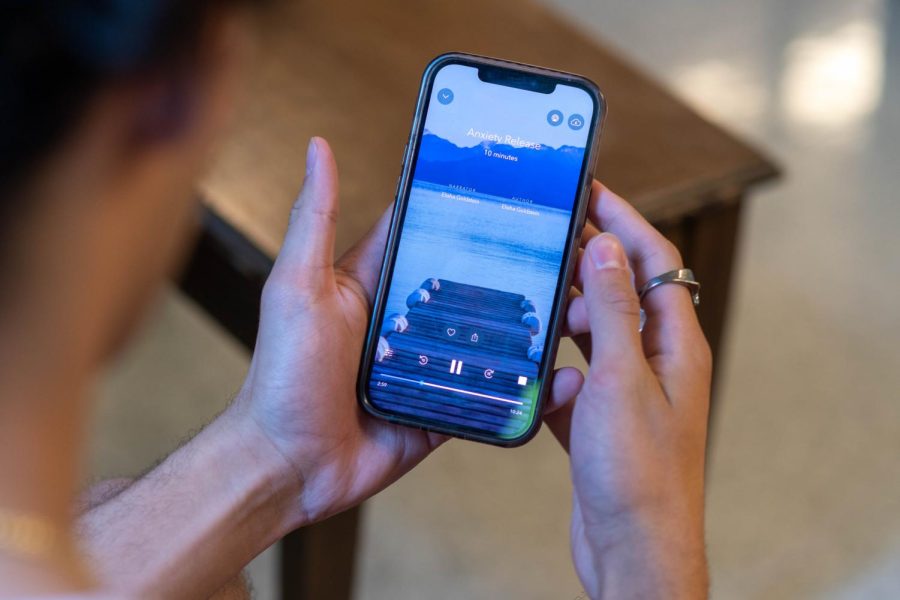Meditation apps help relieve pandemic stress
Apps like Calm or Headspace can help people learn and practice meditation.
May 19, 2022
Deep breath in. Senior Tenzin Karma, who practices Buddhism, meditates in a quiet room, early in the morning. Over the course of the pandemic, as teenagers struggled with their mental health while in quarantine, she witnessed more and more of her friends begin to meditate, looking for new ways to control anxiety and depression.
Meditation has been proven to have a wide array of health benefits, from reducing depression to helping control high blood pressure. With the COVID-19 pandemic leading to a mental health crisis, many turned to meditation, using apps such as Calm and Headspace.
Physical education teacher Debbie Ribbens has always used meditation as a form of prayer and now teaches the techniques to her classes. Rather than for prayer, she recommends her students use meditation to refocus and set goals for themselves.
“As far as doing meditation as a class, it’s to relieve any sort of tension, to help you focus before an exam,” Ms. Ribbens said.
Ms. Ribbens believes that meditation gained popularity during the pandemic because of the difficulty students had with maintaining personal relationships during online learning.
“It’s increased immensely in popularity, because of COVID and quarantine,” Ms. Ribbens said. “Through meditation, people could be more self-aware and also bring back some self-confidence. During quarantine, we didn’t have any social interaction with each other and that is a source of anxiety and depression for people.”
Tenzin understands the draw to meditation while in isolation, as it is easy to perform and keeps people centered.
“With people who are struggling with mental health, I could definitely see why people transitioned to meditation,” Tenzin said. “I think it’s a nice way to start your day.”
Physical education teacher Nichole Magliacco, who contributed to the introduction of meditation into the physical education curriculum, teaches her students to set daily intentions.
“What I learned from it is breath,” Ms. Magliacco said. “How to breathe properly and how that helps your [sympathetic] nervous system and how it relaxes your mind and body.”
Former University of Chicago primary care physician Alex Lickerman, who wrote “The Undefeated Mind: On the Science of Constructing an Indestructible Self” and “The Ten Worlds: The New Psychology of Happiness,” thinks the reason he has seen more of his patients practice meditation during the pandemic may be due to an increase in anxiety and depression caused by self-isolation.
“We do not seem to have evolved into beings who are good in isolation. You know, Zoom meetings aside, that’s something of a connection,” Dr. Lickerman said, “but I think we’ve all learned that being actually physically in each other’s presence is good for our mental health.”
In the beginning of the pandemic, meditation apps, such as Calm, surged in popularity, with over 100 million people in total having downloaded the app.
“I’ve had many, many patients report that they are a great gateway to begin to learn to meditate,” Dr. Lickerman said. “I think it’s a great use of the technology, you don’t really have to have a person teaching you to do this at the most basic level, and you can get real benefit from just jumping on an app and following those instructions.”
As the popularity of meditation and mindfulness apps continues to grow, teenagers and adults alike are able to reap the multitude of mental and physical health benefits from the practice.
“Work on meditation and being good to ourselves every day,” Ms. Ribbens said. “It’s always easy to see negatives in ourselves, because if we don’t boost ourselves up, who will?”
Deep breath out.




























































